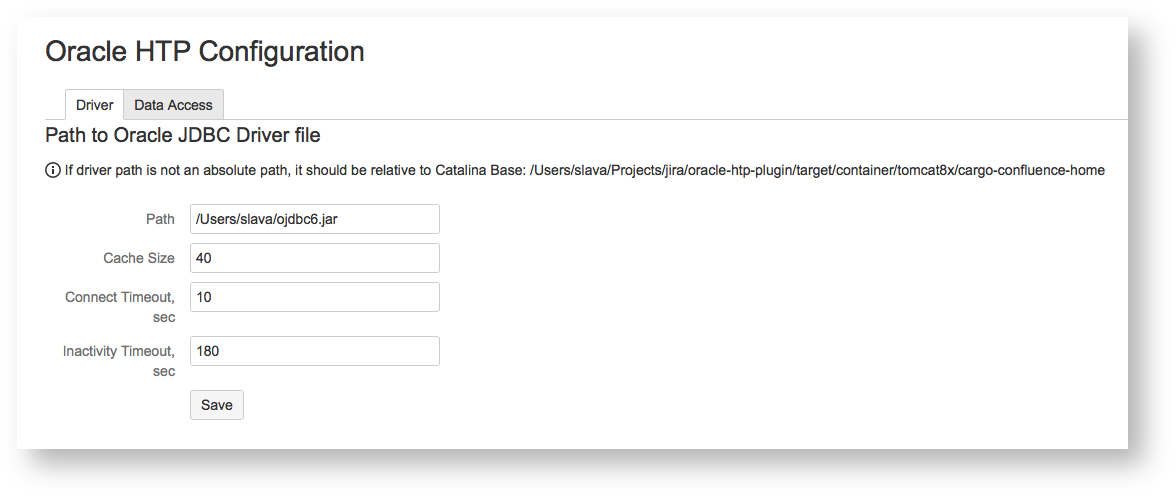- Download Oracle Drivers 32 Bit And 64 Bit
- Oracle Employee Sign In
- Download Oracle Driver For Java
- Download Oracle Drivers
Oracle ODBC Driver Read, Write, and Update Oracle through ODBC The Oracle ODBC Driver is a powerful tool that allows you to connect w. Version: 20.0.7654 Modified: Size: 117.59 MB Download Installer.
This document describes the installation process for the Oracle 12c Client software. The University of Wisconsin-Madison doesn't require any particular version installation of the Oracle client, but for best compatibility, it is recommended users install the 12c client. It is NOT recommended users running the Oracle 11g client update to 12c unless they are experiencing technical issues with the 11g client.
Microsoft ODBC Driver for SQL Server is a single dynamic-link library (DLL) containing run-time support for applications using native-code APIs to connect to SQL Server. Use Microsoft ODBC Driver 17 for SQL Server to create new applications or enhance existing applications that need to take advantage of newer SQL Server features. Oracle Driver goes beyond read-only functionality to deliver full support for Create, Read Update, and Delete operations (CRUD). Your end-users can interact with the data presented by the Oracle Driver as easily as interacting with a database table.
Downloading the Oracle 12c Client
Navigate to the Oracle Database downloads page.
Scroll down to the client options and click the download link for your appropriate OS.
Note: 32-bit Windows applications will not work with Oracle's 64-bit ODBC driver. Therefore, users of 64-bit versions of Windows may need to install the 32-bit version of the Oracle Client if they intend to make ODBC connections with 32-bit applications. For instance, if you are running 64-bit Windows 7 but you plan to use a 32-bit copy of MS Access to connect to EPM, you should install the 32-bit version of the Oracle Client. If you intend to use both 64-bit and 32-bit applications to create ODBC connections, you will need to install both clients.
Accept the 'License Agreement' by checking the box in the popup window.
You will be prompted to sign in with an Oracle account, or to create one (free). Once you have signed in, or created your account and then signed in, you will be asked to download the client. Choose to Save the file to an easily accessible location on your computer's hard drive.
The zip archive containing the client installer is large and may take several minutes to download. Once the download is complete, you can continue to the installation process.
Installing the Oracle 12c Client
Locate the zip archive containing the client installer on your computer's hard drive.
Right-click the zip archive and select 'Extract All...'. Windows will decompress the contents of the zip archive into a folder in the same location.
Open the resulting folder called 'Client32' (or 'Client64'.). Double-click on the application labeled 'setup' to launch the installer program.
On the first installer screen choose 'Administrator' as the installation type.
Click 'Next >' on the language selection screen.
Make sure 'Use Windows Built-in Account' is selected, then click 'Next >'..
On the 'Specify Installation Location' screen change the default 'Oracle Base' location to C:app, and Software Location to C:appclientproduct12.2.0client_1. Click 'Next >' to continue with the installation.
The image below does not have the correct install paths. Please follow the install paths above.The installer program will check for prerequisites and initiate the installation process. Once the installation is complete, you will be taken to a summary screen.
Final Setup Instructions
- Save UW TNSnames.ora file to the correct location in the Oracle directory: Adding, Edting, or Replacing Your TNSnames.ora File for InfoAccess
- Set up ODBC connection (using either 32 or 64 bit as appropriate): Configuring an ODBC connection to InfoAccess in Windows . It is critical to name the Data Source Name in ODBC as 'UW Data Warehouse' otherwise BA's Access files will give errors when connecting to InfoAccess. Test connection.
- Test in Oracle.
Applies to:
Microsoft Connector for Oracle enables the ability to export data from and load data into Oracle data source in an SSIS package.
Version support
The following Microsoft SQL Server products are supported by Microsoft Connector for Oracle:
- Since SQL Server 2019 CU1
- SQL Server Data Tools (SSDT) 15.9.3 or later for Visual Studio 2017
- Microsoft SQL Server Data Tools (SSDT) for Visual Studio 2019
The following Oracle database versions of data source are supported:
- Oracle 10.x
- Oracle 11.x
- Oracle 12c
- Oracle 18c (without Windows Authentication support)
- Oracle 19c (without Windows Authentication support)
The Oracle database is supported on all operating systems and platforms.
Note

Oracle client is not required for Microsoft Connector for Oracle database in SQL Server 2019.
Installation
To install the connector for Oracle database, download and run the installer from the latest version of Microsoft connector for Oracle. Then follow the directions in the installation wizard.
After you install the Connector, you must restart the SQL Server Integration Service to be sure that the Oracle source and destination can work correctly.
To execute SSIS package targeting SQL Server 2017 and below, in addition to Microsoft Connector for Oracle, you will need to install Oracle client and Microsoft Connector for Oracle by Attunity with corresponding version from below links:
Download Oracle Drivers 32 Bit And 64 Bit
Limitations and known issues
Oracle Employee Sign In
- Views are not listed under Oracle source Name of the table or the view. As work-around, use the SQL command and do a select * from view, or set view name to property [Oracle Source].[TableName] in Advanced Editor.
Download Oracle Driver For Java
Uninstallation
Download Oracle Drivers
You can run uninstall wizard to remove Microsoft Connector for Oracle database from SQL Server.
Next steps
- Configure Oracle Connection Manager.
- Configure Oracle Source.
- Configure Oracle Destination.
- If you have questions, visit TechCommunity.

